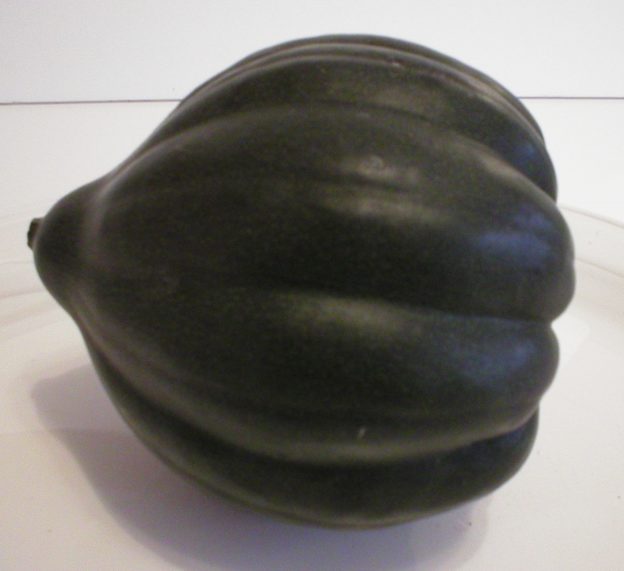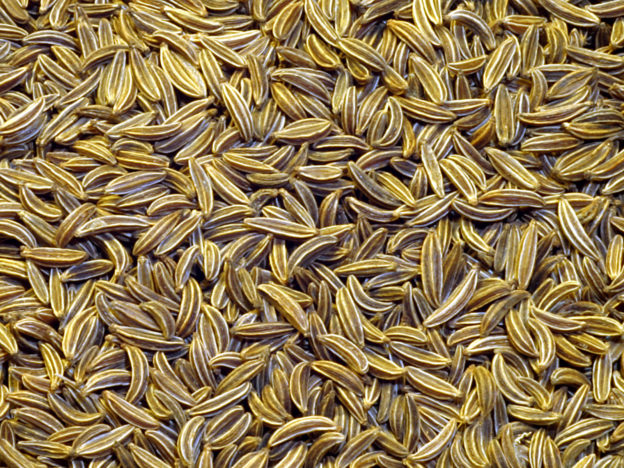Below is an article all about acorn squash. If you have a question about this delicious squash, you should find your answer below!
Enjoy,
Judi
Acorn Squash 101 – The Basics
About Acorn Squash
Acorn squash is a winter squash related to pumpkin and butternut squash, yet it is in the same family as the summer squash zucchini. It is an edible gourd that grows on a vine. Acorn squash is technically a fruit, but we treat it as a vegetable. It has a mild, somewhat sweet flavor. Squash is native to the Americas and is believed to be among the first foods cultivated by Native Americans.
There are different varieties of acorn squash. We typically see the dark green variety in most grocery stores. Other varieties include those that are white, orange, or a blend of all three colors. They are usually available year-round in most grocery stores, but they are freshest and in season in the fall through early winter months.
Nutrition and Health Benefits
Acorn squash has a lot to offer nutritionally. A one-cup serving of baked acorn squash has 115 calories, 9 grams of fiber and no fat to speak of. It contains a lot of Vitamins A, C, and B6, thiamin, niacin, and folate. It supplies a lot of minerals including large amounts of iron, magnesium, potassium, and manganese.
Boosts the Immune System. Acorn squash is very high in Vitamin C, which is critical in supporting a strong immune system. Ample Vitamin C helps the body to produce sufficient white blood cells which are critical in fighting contaminants that enter the body.
Promotes Healthy Eyes and Skin. Acorn squash is exceptionally high in Vitamin A which is valuable in promoting eye and skin health. Vitamin A (in the form of beta-carotene) has been linked to reduced oxidative stress in the eyes, which may help to promote better eyesight. Also, according to the Journal of Investigative Dermatology, Vitamin A may help to prevent skin damage caused by ultraviolet light.
Boosts Digestive Health. The high fiber content of acorn squash helps to provide bulk in the intestinal tract preventing constipation, promoting healthy bowels. Fiber-rich foods are also known to help prevent colon cancer and irritable bowel syndrome. Furthermore, acorn squash has both soluble and insoluble fibers which help to promote the health of our microbiome, increasing our overall gastrointestinal health.
Blood Pressure Regulation: Potassium is a known vasodilator, relaxing blood vessels taking stress off the cardiovascular system. Acorn squash contains a lot of potassium (486 milligrams per cup of squash), helping to keep the cardiovascular system healthy.
Healthy Bones: One cup of cooked acorn squash provides 46 milligrams of calcium, an important mineral in helping to keep our bones strong and healthy.
Improves Glycemic Load. The high fiber content of acorn squash (and all winter squash) improves the glycemic load of a meal. This means the fiber helps to slow down the absorption of carbohydrates into the bloodstream after a meal, helping to lower the spike in blood sugar after eating.
Reduced Inflammation. Many of the nutrients in acorn squash act as natural antioxidants, helping to reduce inflammation in the body. Vitamins C and A, along with manganese are in this category.
How to Select an Acorn Squash
When choosing an acorn squash, look for one that feels heavy for its size. The optimal size is between one and three pounds. Larger ones may be dry and stringy. Choose one that feels hard with smooth, dull skin with no soft spots. Ones with shiny skin have been waxed and were most likely picked before they were ripe. A little orange on the skin is fine, but a lot of orange may indicate it may be overripe. Overripe squash may be dry and stringy.
How to Store Acorn Squash
It is best to store uncooked acorn squash in a cool, dark storage area, such as a basement. The ideal storage temperature is between 50 and 55°F. They will keep best when some of the stem remains attached to the squash, which helps to prevent moisture loss. Squash should last up to a month (and sometimes longer) when stored that way. Raw, uncut squash will keep in the refrigerator for up to two weeks, so storing them elsewhere is a better option. Home grown squash may keep well for two to three months (at 50 to 55°F).
Once cut or cooked, acorn squash should be wrapped tightly, stored in the refrigerator, and used within 4 days.
How to Preserve Acorn Squash
Acorn squash should be cooked before being frozen. It may be cooked by any method you prefer. Remove the flesh from the skin, then mash the pulp or leave it in chunks. Place the pulp in an airtight freezer bag or container. Label it with the date and store it in the freezer for up to 10 to 12 months.
How to Prepare Acorn Squash
First remove any labels from the grocery store, then wash the squash. Cut the squash lengthwise and remove the seeds and fibers from the center. If desired, to make your squash easier to cut, first pierce the skin in a few places with a knife or fork. Microwave it on high for 2 minutes, then allow it to cool for a few minutes until it can be handled. Then cut the squash in half, remove the seeds and strings, and cook as desired.
Acorn squash may be steamed, boiled, roasted, stuffed, or microwaved until tender. Then scrape the flesh from the skin (if preferred) and use it as desired. The skin is edible, but many people choose not to eat it. The raw flesh can also be cut from the peel, then cooked as desired. Pureed squash may also be used as a pie filling.
Quick Ideas and Tips for Using Acorn Squash
* When baking cut halves of acorn squash with the skin side down, cut a small slice off the rounded side so they will lay still and not rock around in the baking dish.
* The seeds of acorn squash are edible and can be roasted just as you would roast pumpkin seeds. Remove them from the uncooked squash and separate the seeds from the strings. Rinse, then dry the seeds. Lightly coat the seeds with oil, then spread them on a foil or parchment paper lined baking sheet. Sprinkle with salt or other seasoning, as desired. Roast at 300°F until toasted and fragrant, tossing them every 20 minutes, about an hour. They may be roasted at higher temperatures for shorter periods of time. Just watch them closely so they don’t burn.
* Squash seeds can also be roasted without added oil. Simply remove the seeds from the squash, separate them from the strings, and wash them in cool water. Spread them on a dry baking sheet and sprinkle them with whatever seasoning you desire. Roast them at 350°F until dry and toasted, about 20 to 30 minutes. Allow them to cool, then enjoy!
* Acorn squash has a mild flavor. Those with more orange flesh are sweeter than those with paler flesh.
* For something different, try adding mashed cooked acorn squash in homemade ravioli or between layers of lasagna noodles.
* Try adding cooked acorn squash to soup, especially milk-based soups. It will act as a thickener, making your soup creamy while adding a slightly sweet flavor.
* Here’s a kid-tested way to serve acorn squash…Cut the squash in half lengthwise. Remove the seeds and strings and place it cut side down on a parchment paper lined baking dish. Bake at 375 or 400°F until a knife can be inserted through the squash easily, about 30 minutes. Remove the squash from the oven and turn the pieces cut side up. Add a little fat of choice (no more than 1 tablespoon of coconut oil, butter, or other fat), and about a tablespoon of apricot preserves into the cavity of each half. Return the squash to the oven and broil until the fat is melted and the squash halves are lightly browned.
* For an easy side dish, mash or puree cooked acorn squash and season with herbs of choice (such as sage or thyme), or add sweetener of choice (such as maple syrup, brown sugar, or even apple juice or apple cider) and a dash of complimentary spice such as cinnamon, nutmeg, or allspice.
* Just for the record…the skin of acorn squash IS edible. Whether you want to eat it is up to you. When boiled, the skin will soften and may be more palatable than when cooked other ways. However, when the squash is cooked, the flesh can easily be removed from the peel, so it’s easy to go either way.
Herbs/Spices That Go Well with Acorn Squash
Allspice, cinnamon, cloves, curry powder, ginger, mint, nutmeg, parsley, pepper, sage, salt, savory, thyme
Foods That Go Well with Acorn Squash
Proteins, Legumes, Nuts, Seeds: Almonds, bacon, beans and baked beans, chicken, eggs, hazelnuts, pecans, pine nuts, pistachios, sausage, walnuts
Vegetables: Bell peppers, broccoli, Brussels sprouts, celery, chard (Swiss), fennel, garlic, kale, leeks, mushrooms, onions, potatoes, scallions, spinach, sweet potatoes, turnips
Fruits: Apples, apricots (dried), coconut, cranberries (dried), currants, lemon, orange, pears, plums (dried), raisins
Grains and Grain Products: Breadcrumbs, bulgur, corn, quinoa, rice (esp. wild), wheat
Dairy and Non-Dairy: Butter, browned butter, cheese, coconut milk (and other non-dairy milks), ghee, Parmesan cheese, yogurt
Other Foods: Honey, liqueur (i.e. amaretto, Grand Marnier), maple syrup, miso, olive oil, soy sauce, sugar (esp. brown), sweetener (esp. evaporated cane juice), tamari, vanilla, vinegar
Acorn squash has been used in the following cuisines and dishes…
Stuffed acorn squash, bread stuffing, pilafs, soups, stews
Suggested Food and Flavor Combos Using Acorn Squash
Add acorn squash to any of the following combinations…
Apples + curry powder
Apples + maple syrup
Cinnamon + olive oil
Corn + potatoes
Cranberries + orange
Ginger + maple syrup + soy sauce
Pecans + quinoa
Recipe Links
Vegetarian Acorn Squash Soup https://www.thespruceeats.com/vegetarian-acorn-squash-soup-3377961
Vegetarian Acorn Squash Recipe with Cornbread Stuffing https://www.thespruceeats.com/acorn-squash-recipe-with-cornbread-stuffing-3377154
Grilled Acorn Squash with Asiago Cheese https://www.thespruceeats.com/acorn-squash-with-asiago-cheese-336597
Vegan Stuffed Acorn Squash https://www.thespruceeats.com/vegan-quinoa-stuffed-acorn-squash-recipe-3377024
Baked Stuffed Acorn Squash with Beef and Tomatoes https://www.thespruceeats.com/stuffed-squash-with-spiced-beef-and-tomatoes-3062225
Candied Acorn Squash https://www.food.com/recipe/candied-acorn-squash-3983
Parmesan Acorn Squash https://www.food.com/recipe/parmesan-acorn-squash-104134
Sausage and Apple Stuffed Acorn Squash https://www.food.com/recipe/sausage-and-apple-stuffed-acorn-squash-146036
Baked Acorn Squash with Spicy Maple Syrup https://www.food.com/recipe/baked-acorn-squash-with-spicy-maple-syrup-2056
Baked Cranberry Acorn Squash https://www.food.com/recipe/baked-cranberry-acorn-squash-3806?photo=cGhvdG8tNjQ5OTA
Sweet Acorn Squash and Apple Soup https://www.food.com/recipe/sweet-acorn-squash-and-apple-soup-69271
30 Best Acorn Squash Recipes for a Healthy Addition to Your Fall Dinners https://www.countryliving.com/food-drinks/g4685/acorn-squash/
19 Delicious Acorn Squash Recipes that Will Get You Pumped For Fall https://www.goodhousekeeping.com/food-recipes/g4513/acorn-squash-recipes/
Breakfast Baked Acorn Squash with Greek Yogurt, Honey and Pecans https://www.ambitiouskitchen.com/breakfast-baked-acorn-squash-greek-yogurt-honey-pecans/
Apple-Maple Acorn Squash Puree https://www.cltampa.com/food-drink/recipes/article/20731048/apple-maple-acorn-squash-puree-and-a-lot-more-apple-recipes#.VeSHpflVhBc
Herb Roasted Parmesan Acorn Squash https://therealfoodrds.com/herb-roasted-parmesan-acorn-squash/
Resources
https://www.thespruceeats.com/acorn-squash-facts-selection-and-storage-1807486
https://www.thespruceeats.com/acorn-squash-selection-and-storage-1807731
https://www.thespruceeats.com/oven-toasted-pumpkin-seeds-recipe-1809633
https://www.thespruceeats.com/acorn-squash-cooking-tips-1808026
https://healthyeating.sfgate.com/healthy-acorn-squash-2836.html
https://www.specialtyproduce.com/produce/Acorn_Squash_4383.php
https://foodfacts.mercola.com/acorn-squash.html
http://whfoods.com/genpage.php?tname=foodspice&dbid=63
https://www.medicaldaily.com/acorn-squash-health-benefits-will-surprise-442347
https://producemadesimple.ca/what-goes-well-with-acorn-squash/
https://www.myrecipes.com/ingredients/can-you-eat-the-skin-on-all-types-of-squash
https://www.allrecipes.com/recipe/73843/baked-acorn-squash-with-apricot-preserves/
Page, Karen. (2014) The Vegetarian Flavor Bible. New York, NY: Little, Brown and Company.
About Judi
Julia W. Klee (Judi) began her journey enjoying “all things food” in elementary school when she started preparing meals for her family. That love of food blossomed into a quest to learn more and more about health and wellness as related to nutrition. She went on to earn a BS Degree in Food and Nutrition, then an MS Degree in Nutrition. She has taught nutrition and related courses at the college level to pre-nursing and exercise science students. Her hunger to learn didn’t stop upon graduation from college. She continues to research on a regular basis about nutrition as it relates to health. Her hope is to help as many people as possible to enjoy foods that promote health and wellness.


